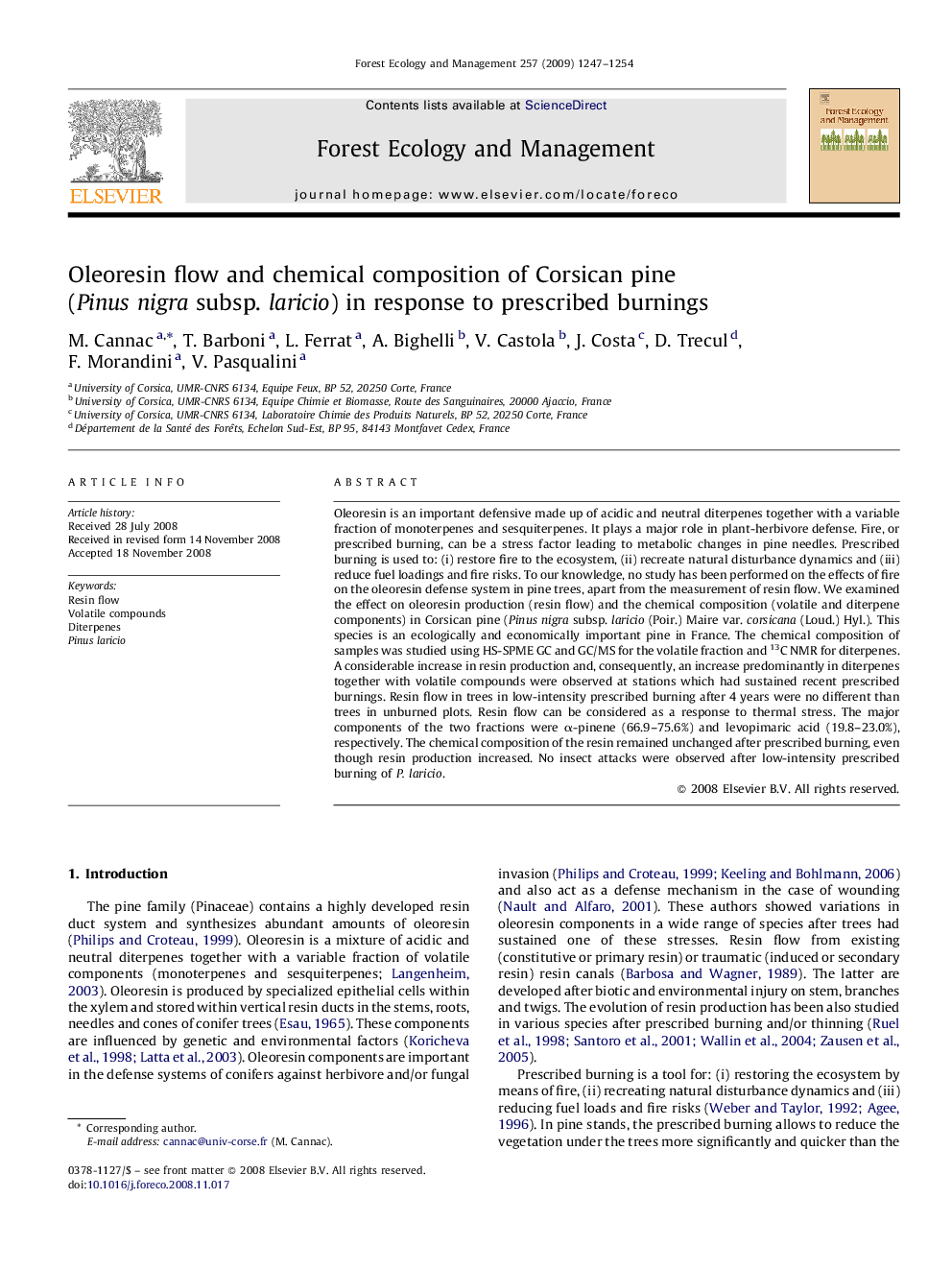| Article ID | Journal | Published Year | Pages | File Type |
|---|---|---|---|---|
| 88596 | Forest Ecology and Management | 2009 | 8 Pages |
Oleoresin is an important defensive made up of acidic and neutral diterpenes together with a variable fraction of monoterpenes and sesquiterpenes. It plays a major role in plant-herbivore defense. Fire, or prescribed burning, can be a stress factor leading to metabolic changes in pine needles. Prescribed burning is used to: (i) restore fire to the ecosystem, (ii) recreate natural disturbance dynamics and (iii) reduce fuel loadings and fire risks. To our knowledge, no study has been performed on the effects of fire on the oleoresin defense system in pine trees, apart from the measurement of resin flow. We examined the effect on oleoresin production (resin flow) and the chemical composition (volatile and diterpene components) in Corsican pine (Pinus nigra subsp. laricio (Poir.) Maire var. corsicana (Loud.) Hyl.). This species is an ecologically and economically important pine in France. The chemical composition of samples was studied using HS-SPME GC and GC/MS for the volatile fraction and 13C NMR for diterpenes. A considerable increase in resin production and, consequently, an increase predominantly in diterpenes together with volatile compounds were observed at stations which had sustained recent prescribed burnings. Resin flow in trees in low-intensity prescribed burning after 4 years were no different than trees in unburned plots. Resin flow can be considered as a response to thermal stress. The major components of the two fractions were α-pinene (66.9–75.6%) and levopimaric acid (19.8–23.0%), respectively. The chemical composition of the resin remained unchanged after prescribed burning, even though resin production increased. No insect attacks were observed after low-intensity prescribed burning of P. laricio.
